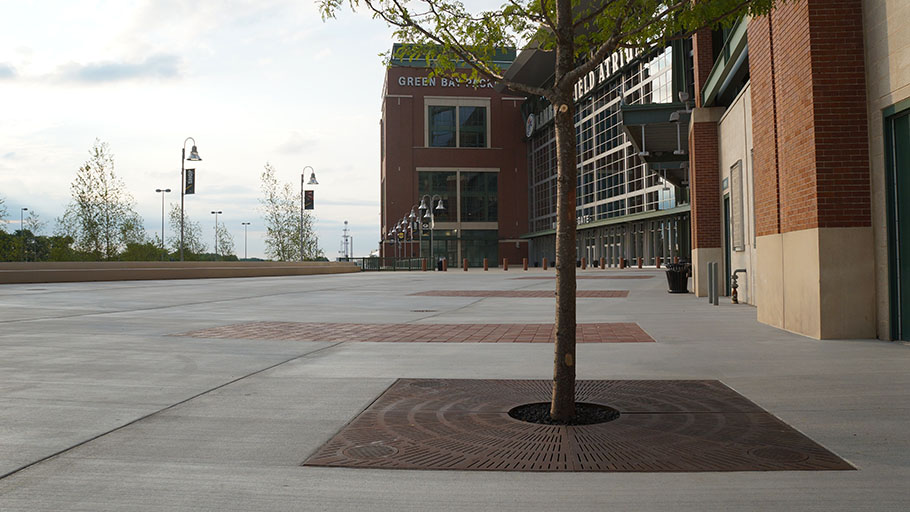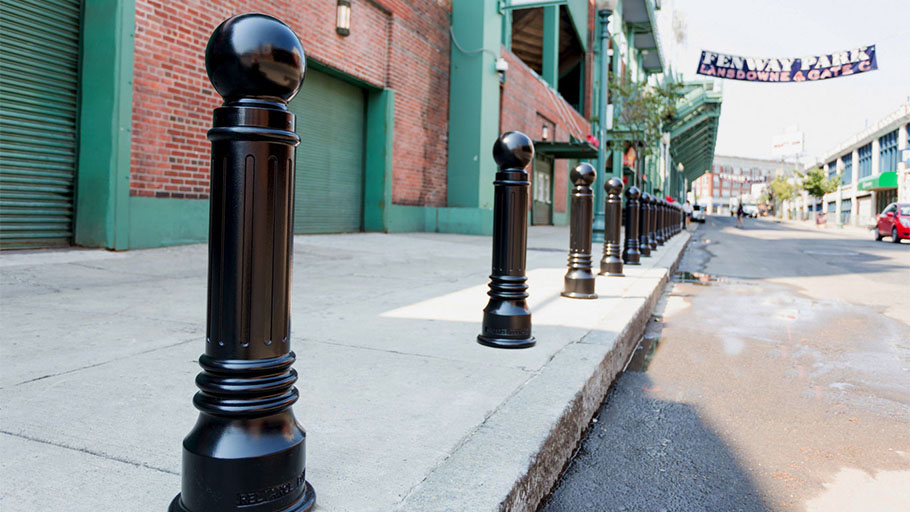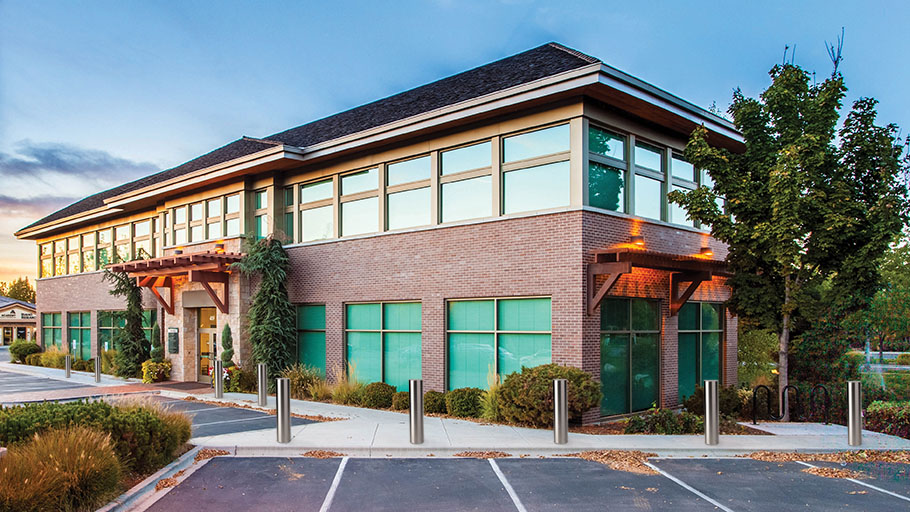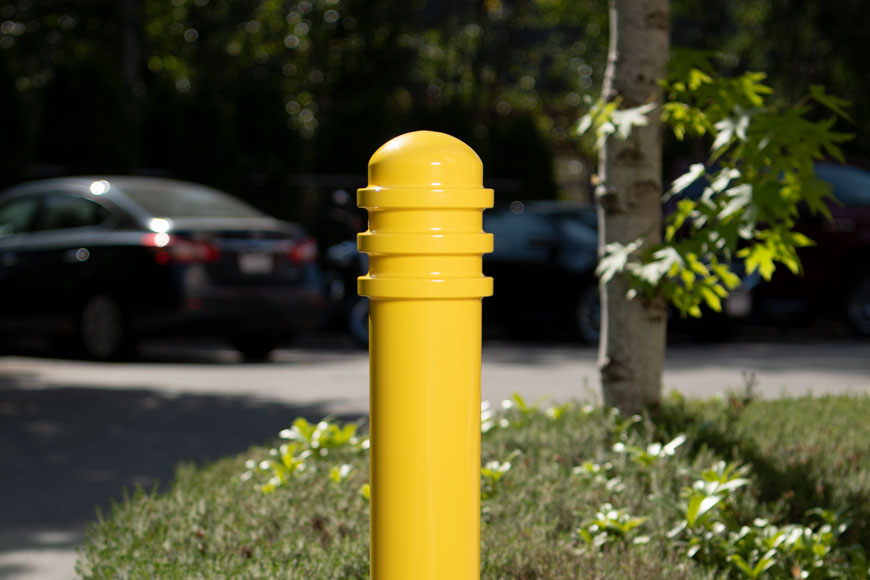Tactile paving makes the built environment more universally accessible
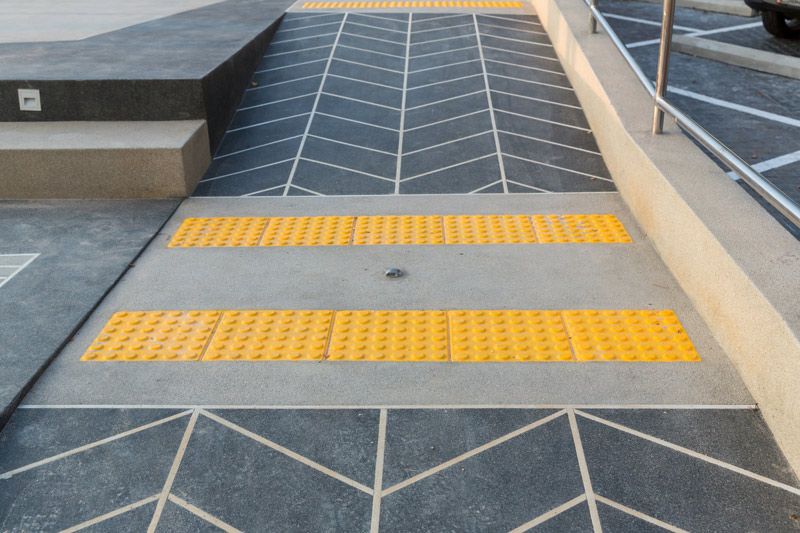
You’ve probably seen tenji blocks appearing with new road work in your neighborhood. They’re becoming as common a part of the hardscape as curb cuts or street signs. These new elements of the sidewalk are textured strips on the sidewalk—sometimes covered in raised dots, and sometimes striped with long, wide bumps. This new tactile paving is part of a movement toward universal design. Universal design is a philosophy of building that emphasizes creating the best quality of life for everyone, regardless of their abilities. Tenji blocks are used to communicate the built environment to all users.
What does “tenji block” mean?
Tenji is the word for a Japanese system of braille. Tenji block could therefore be translated as “braille block.” These embedded plates allow people to read the environment through touch, rather than sight, the way that braille allows people to read books. There are several types of tenji block.
The first type is covered with little raised dots set into a grid pattern. These dots are called “truncated domes,” because they are flat on the top to provide good traction. Dotted tenji blocks inform people that there’s an upcoming change in the walking surface. Straight grids indicate a change in level, like a curb or a ramp. Offset grids, which line up in only one direction, run parallel to the edge of a subway or train platform.
The second type of tenji block have plates have long, wide bumps.
If these bumps are continuous, narrow, and square edged, the bumps are called “rods.” They’re installed parallel to a hazard as a clear warning. They’ll catch a cane and stop it short. These hazard rods are often placed at the top of a stairway. They’re often a little bit taller than truncated domes so that they also feel quite obvious under a shoe.
Smooth, oblong bumps with rounded ends are directional guides. They are laid out in dashes with space in between, so that canes can find them and slip into groove from any direction. Such wayfinding dashes take people through an environment via a safe pathway, highlighting routes to places like washrooms, elevators, or exits. When a cane encounters a rounder edged bump it can easily slip into the direction of travel, rather than stopping short like a hazard-rod block might do.
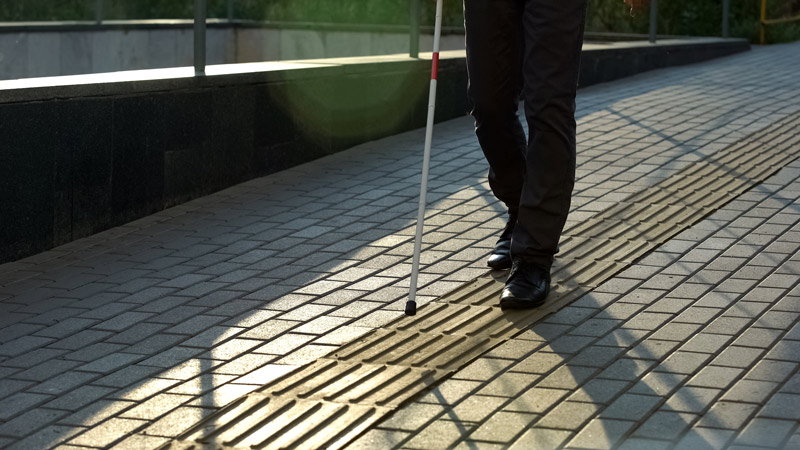
History of the tenji block
The tenji block was invented in Japan by a man called Seiichi Miyake, apparently out of concern for a friend. He invented and tested them using his own money. Then, in 1967, Miyake’s design was installed outside a school for the blind in Okayama City.
In 1977, the Japanese National Railway was the first large scale adopter of tenji blocks, placing the grids along station platforms. They became so useful and popular that Japan adopted them in planning by 1985. From there they’ve spread globally.
Given the popularity and ubiquity of the tenji blocks, there is very little publicly known about its inventor’s story. To honor Miyake’s achievement, however, Google put the tenji blocks in a Doodle in March of 2019.
Tactile paving is useful when building with a universal design approach.
Multi-sensory environments
One of the goals of universal design is to create environments that can be navigated through many senses. Traditionally, people have created visual notifications as a primary way of communicating in the environment. Color, light, symbols, and writing are used to direct, inform, and advertise.
Those with visual impairments must interpret the world through other senses. The lack of intentional communication in their environment can make the world less safe, or simply more challenging to navigate.
Adding auditory and textured elements to the environment not only helps those with visual impairments, but creates a complete experience for all users. Many people can feel the blocks through the soles of their shoes. This creates a (sometime subconscious) reminder of changing surface levels. Now that many people walk through a city with their phones in hand, the high-contrast and nubbled texture of tenji blocks can also catch the attention of the distracted pedestrian.
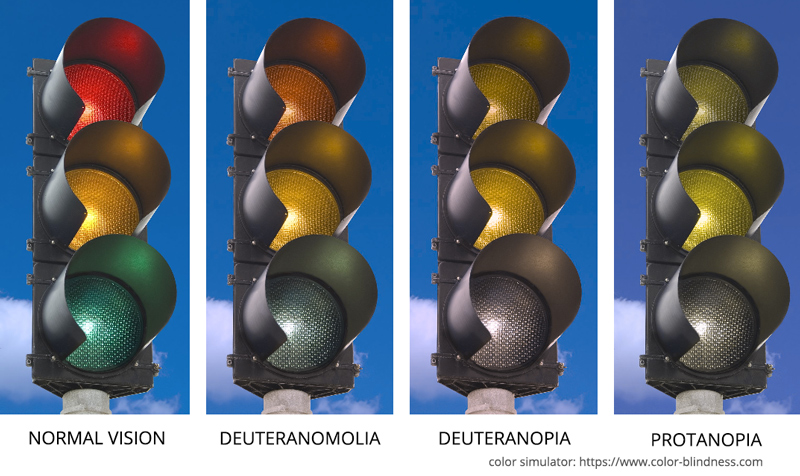
Color choices for higher visibility
In universal design, awareness of the needs of colorblind and low-vision people is an important design consideration. Consider how traffic lights to people of various colorblind types: problems in the green and red spectrum can sometimes make green lights in the distance hard to discern when compared to street lights in the distance. (Position in the traffic light provides closer-up guidance.)
When installing tenji blocks, high-contrast in necessary for those with low vision. Safety yellow is visible to most. High contrast should be the difference between light and dark, rather than relying on the idea of “contrasting colors” on the color wheel. The US Access Board found in studies that 70% light/dark contrast rates provided enough of a difference to be visible to those with low vision.
Commonly, in light concrete sidewalks, dark cast iron is laid raw. This lowers maintenance costs by not needing repainting. Cast iron weathers from red to a deep brown, and as long as the light-dark contrast between the iron and the rest of the ground surface is 70%, it works very well for those with lower vision.
Tenji block materials
Tenji blocks are available in a number of materials including:
- Concrete
- Metal domes embedded in concrete
- Formed stone pavers
- Clay pavers
- Cast iron (raw)
- Cast iron (painted)
- Plastic
Metal domes, whether cast iron or embedded in concrete, are generally the safest bet for places where snow plows are regularly used, as they will not rip off under a plow blade. For this reason, cast iron is often the choice of municipalities and is very commonly found on city sidewalks. It is generally left raw, so that it can go years without maintenance, yet yellow paint is also available to municipalities, or different colors when placed as part of the unique aesthetic of an area.
Formed pavers of clay or stone are common in cobblestone streets, or to create paving looks at a unique site. Plastic is often the choice on train station platforms and other indoor spaces: a covered mall, an airport, or bus station is likely to use yellow plastic. These plates can be used outside in some climates.
From Japan to the world
Tenji blocks are so instinctively useful to city planners that it’s sometimes hard to remember that they are relatively recent in North America. Curb cut detectable warning plates were not required in the Americans with Disabilities Act until 2000. Japan led the way on warning plates, and is still more advanced at using wayfinding directional plates throughout its built environment. Thanks to Japan’s Seiichi Miyake and the urban planners in Japan’s biggest cities, we are now creating a built environment a little safer for the visually impaired and a little clearer for all citizens.
Related Articles:








